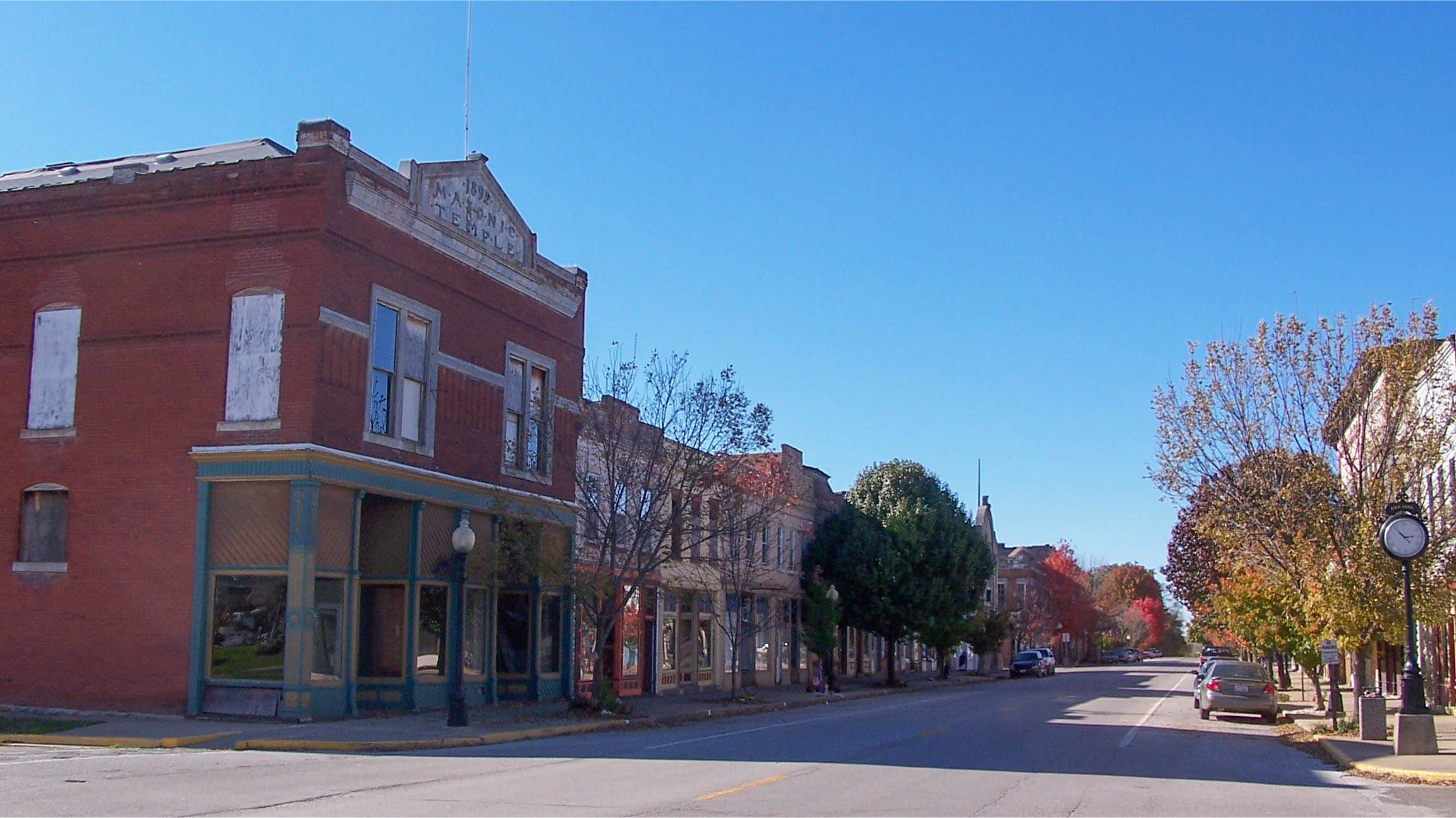Visitors Guide to Carthage
Hancock County, Illinois
The Old Carthage Jail
Kibbe Hancock Heritage Museum
Carthage is a rural city in West-Central Illinois and the county seat of Hancock County. Being in the midst of an extensive prairie, Carthage was not settled as early as the western and eastern portions of the county. The first settler is believed to have been Elder Thomas H. Owen, who came in 1831. A permanent county seat was not set when Hancock County was established in 1829 and in early 1833 the Illinois General Assembly commissioned William Gilham, Scott Riggs, and John Hardin to establish a permanent county seat near the geographic center of the county. The location they chose became the city of Carthage which was platted by the beginning of June as court was heard on June 3rd in a hastily constructed courthouse. Carthage incorporated as a town in 1837.
The first courthouse was a log building on the south side of the square. In 1939 a second courthouse was built in the center of the square by Moses Stephens, at a cost of $3,700. The original courthouse was used for other purposes until it was demolished in 1845. Abraham Lincoln spoke here on October 22, 1858, during his campaign for the US Senate which he lost. A plaque commemorating his visit is on a large stone on the south side of the courthouse. His opponent, Stephen A. Douglas, spoke here on October 11, 1858 and a plaque commemorating his visit is on a pillar at the entrance on the south side of the courthouse. The second courthouse was razed in 1906 to make way for the current courthouse which was dedicated in 1908 and is the centerpiece of the city. The courthouse and the buildings facing the square have been listed on the National Register of Historic Places.
In 1839 the Mormon Church established its headquarters in Nauvoo, northwest of Carthage. In 1844 Carthage became the center of unrest between the Mormons and the general populace who were antagonistic towards them. When an anti-Mormon newspaper in Nauvoo was destroyed two leaders of the Mormons, Joseph and Hyrum Smith, were jailed at Carthage to await trial. Illinois Governor Thomas Ford ordered the Carthage Grays militia unit to guard the jail from an anti-Mormon mob. The mob overpowered the guard (some believe the guards joined the mob,) entered the jail, shot the Smiths, and wounded another Mormon, John Taylor. Taylor, later the leader of the Church of Jesus Christ of Latter-day Saints, recovered from his wounds. Conflict between Mormons and their neighbors continued until 1846 when the Mormons left for Utah. Over the years the jail had been modified and utilized for different purposes. For a period the jail was home to Carthage College. The jail has been restored to a close approximation of its appearance in 1844 and is now owned by The Church of Jesus Christ of Latter-day Saints. The site, a full city block, is operated as a historical visitor's center.
Carthage College was founded by Lutheran pioneers in education in 1847 and was chartered by the Illinois General Assembly as The Literary and Theological Institute of the Lutheran Church of the Far West. The name was soon shortened to Hillsboro College. In 1852, the College moved to Springfield, Illinois, and assumed the new name of Illinois State University but closed due financial difficulties in 1869. In 1870 the College was reopened as Carthage College back in its namesake town. Financial difficulties caused by the Great Depression and both World Wars and the college relocated to its current location in Kenosha, Wisconsin in 1962. Realizing that many of the items in the college museum should remain in Hancock County because of their local provenance and significance, Dr. Kibbe, curator of the college museum, purchased them and then deeded her collection and her home (a historic property itself) to the city of Carthage for a museum. The museum was originally located in the Kibbe House and was moved in 1989 to a newly constructed building on Walnut Street across the street from the historic Carthage Jail site. This museum is filled with a large assortment of items and artifacts ranging from historical memorabilia to unusual oddities.
Carthage is a business center and a microcosm of life in west central Illinois and its charm comes from its turn of the century architecture, its beautiful old trees, its historical ambiance, its friendly residents.












